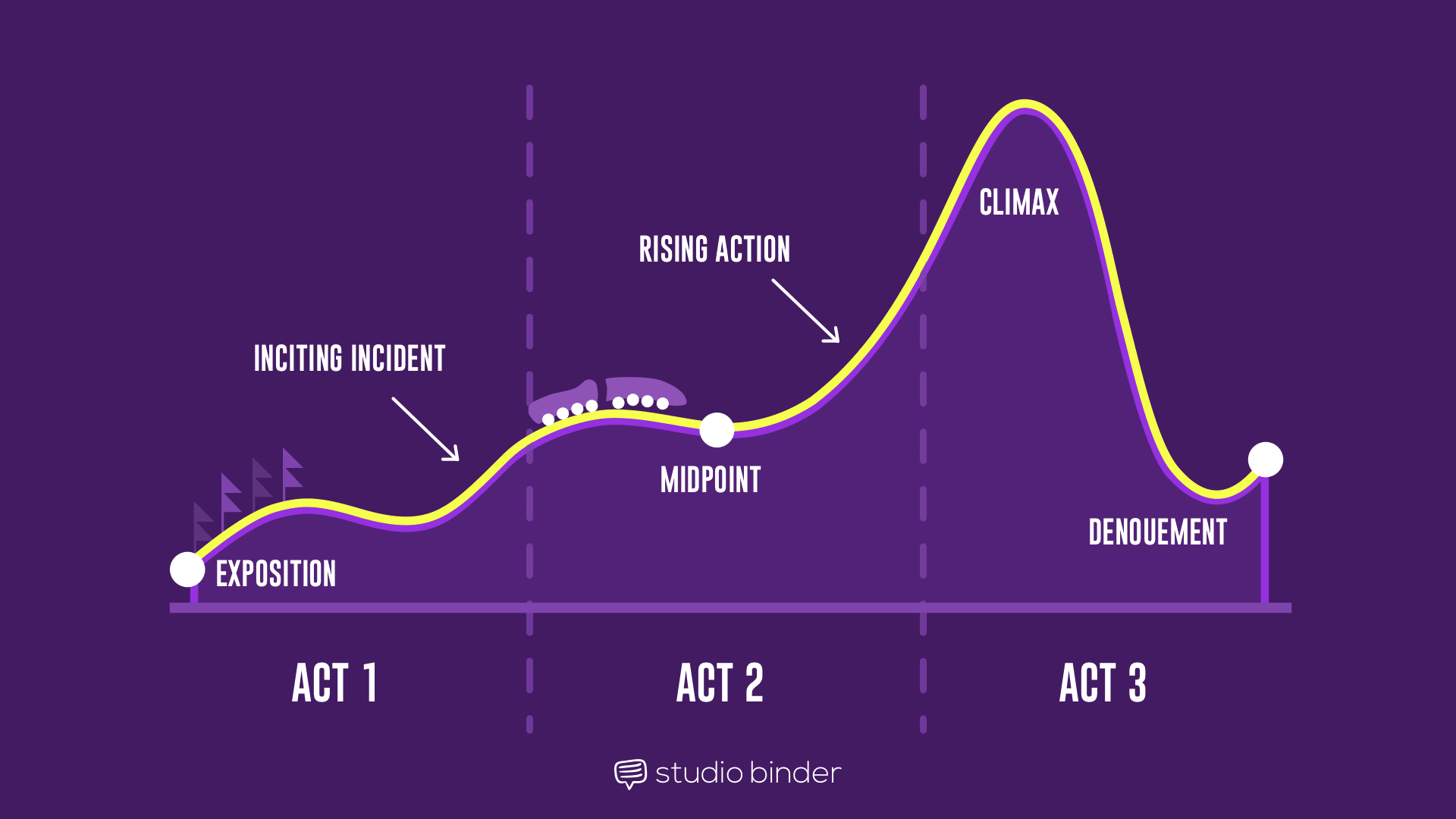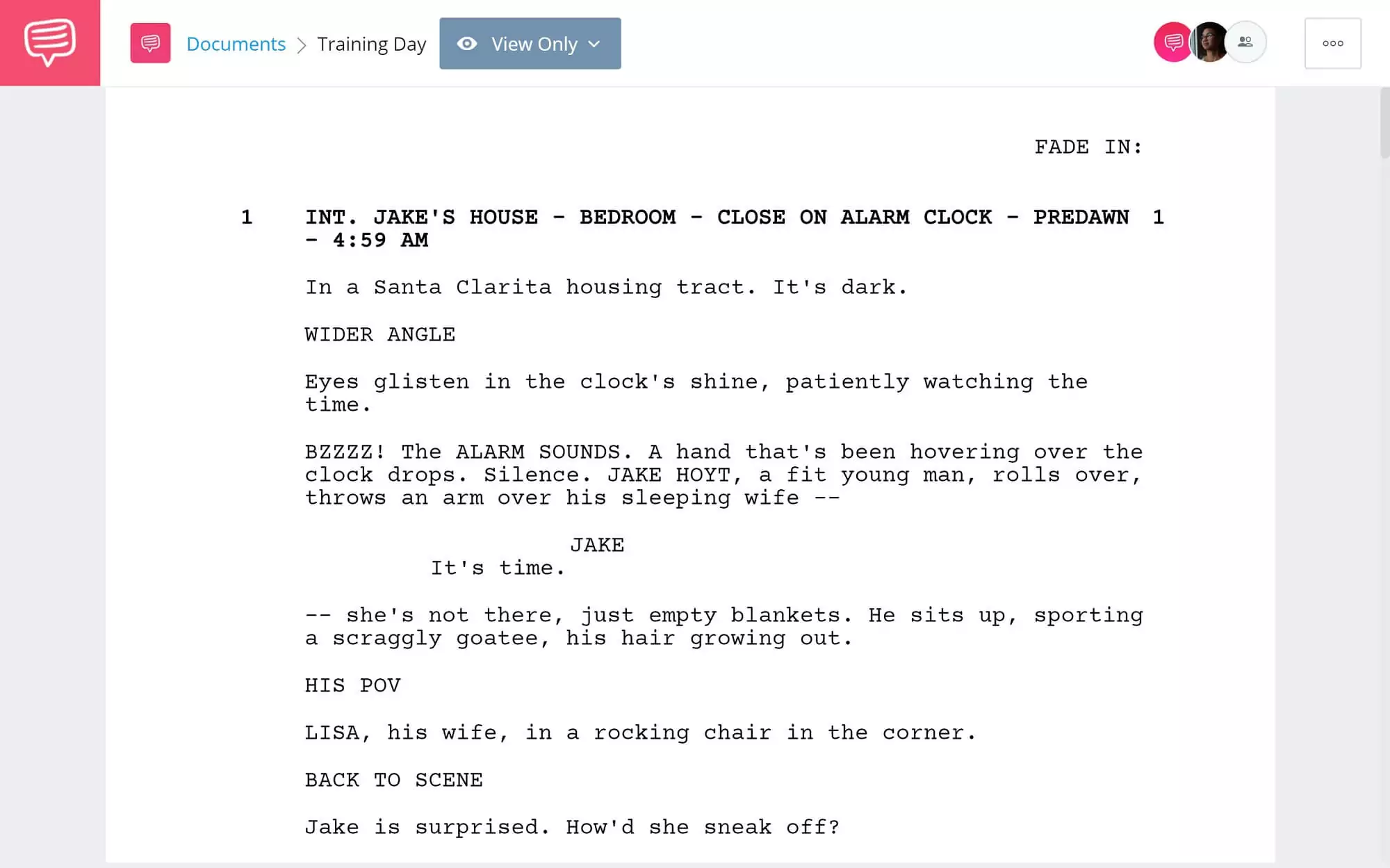Since the dawn of time, storytelling has woven itself into the tapestry of our human existence. It’s in the pages of our favorite books, on the silver screen of our cherished cinemas, and even nestled within the confines of our daily social media scrolls. A good story, one that truly seizes our attention, is a potent force indeed.
But what makes a story resonate? What binds us to it, keeps us turning the page or hitting ‘play next’? The secret lies in its narrative arc
What is a Story Arc in Storytelling?
First, let’s define a story arc
Now, a narrative arc isn't some mystical, literary concoction. Think of it as the lifeblood of your story, the heartbeat that gives rhythm to your tale. It's the journey your characters embark upon, the trials they face, the triumphs they celebrate, and the transformation they undergo.
STORY ARC DEFINITION
What is a story arc in storytelling?
At its core, a story arc, also called narrative arc, is the overarching structure and progression of a narrative. It serves as a vital framework that provides coherence, allowing a story to unfold in a logical and engaging manner. Think of it as the sturdy backbone of a story, guiding the reader or viewer through various stages of the narrative, such as the exposition, rising action, climax, falling action, and resolution.
Each stage contributes to the overall development and depth of the story, creating a captivating and immersive experience for the audience. Through well-crafted story arcs, writers can shape characters, build tension, and deliver impactful moments that resonate with readers or viewers long after the story has ended.
Story Arc Elements:
- Exposition
- Rising Action
- Climax
- Falling Action
- Resolution
What is a Story Arc Defined By?
Story Arc vs Plot
While the terms "story arc" and "plot" are often used interchangeably, they actually refer to distinct and complementary aspects of storytelling. The plot encompasses the specific events, actions, and conflicts that drive the narrative forward, constructing the backbone of the story.
On the other hand, the story arc encompasses the broader trajectory and development of the story, including character growth, thematic progression, and emotional arcs. It provides the overarching structure that gives depth and meaning to the plot, guiding the reader or viewer through a transformative journey. In this interview, Seth Rogen gives a great perspective on the difference between story and plot.
Seth Rogen • What is a Story Arc vs Plot?
In essence, the plot answers the question of what happens, while the story arc answers the question of how and why it happens, weaving a captivating tapestry of storytelling.
Story Arc Meaning
Story arc vs Character arc
A crucial distinction exists between the story arc and the character arc. The story arc guides the sequence of events and plot progression, while the character arc captures the growth and transformation of a character throughout the story.
Understanding the story arc provides insights into the context of the character's journey, shaping their experiences and decisions. The character's arc intertwines with the story arc, creating a dynamic interplay between external events and internal changes.
How to Write a Character Arc • Subscribe on YouTube
In essence, while the story arc outlines the trajectory of the narrative, the character arc offers a profound exploration of the protagonist's evolution. It allows readers to connect with the character on a deeper level, witnessing their trials, triumphs, and the profound impact these experiences have on their identity and worldview.
Understanding the nuances of both the story arc and the character arc is vital in crafting a compelling and well-rounded narrative. It ensures that the plot unfolds in a coherent and engaging manner, while also providing readers with a profound and meaningful character journey that resonates long after the story ends.
Related Posts
What is a Story Arc Made Of?
Story Arc Elements
Now we've discussed the differences between story arcs, plot, and character arcs, let's break down the story arc into its core components.
Freytag's Pyramid, coined by 19th-century German playwright Gustav Freytag, is often considered the origin of these elements of a story arc. This model dissects the narrative into five distinct stages: exposition, rising action, climax, falling action, and denouement.

Three Act Structure • Narrative Arc Diagram
The pyramid serves as a visual representation of how a story should ideally ebb and flow, maintaining reader engagement and building suspense. It has significantly influenced storytelling, laying the groundwork for the structure of contemporary narratives across various mediums.
A well-developed movie arc consists of several key elements:
Exposition
The exposition serves as the introduction to the story. It sets the stage by introducing the main characters, their world, and the initial conflict or situation they find themselves in. The exposition establishes the foundation upon which the rest of the story will be built.
What is Exposition in Screenwriting • Subscribe on YouTube
Rising Action
The rising action is where tension and conflicts begin to escalate. It involves a series of events that drive the story forward, building anticipation and suspense. The rising action is crucial in keeping the audience engaged and invested in the narrative.
Predator uses rising action expertly. The titular predator doesn’t strike until about halfway through the film, but screenwriters Jim and John Thomas keep the audience interested with the mission that Schaefer and his team are on.
The first half of the film follows Schaefer and his men slowly realizing the mission isn’t at all what it seems. After an explosive battle, Schaefer realizes he’s been used by his friend, Dillon. Check out the exchange on the page, which we imported into StudioBinder’s screenwriting software:
What is a story arc?
But neither Schaefer nor Dillon realize the true nature of their mission until it’s too late. This rising action both builds suspense and sets up the next plot point.
Climax
The climax is the turning point or the most intense moment of the story. It's the pivotal moment where the main conflict reaches its peak, and the fate of the characters hangs in the balance. The climax often serves as a major emotional or dramatic highlight of the story.
Joker Murray Scene Breakdown • Subscribe on YouTube
Falling Action
After the climax, the falling action begins. This phase focuses on resolving conflicts and tying up loose ends. It provides a sense of closure and allows the story to move toward its conclusion. The falling action helps to wrap up any remaining storylines or character arcs.
Resolution/Denouement
The resolution is the final stage of the story arc. It provides closure to the narrative arc and reflects on the overall theme or message of the story. The resolution allows the audience to reflect on the journey they have taken and leaves a lasting impact.
Narrative Arc Examples
Types of Story Arcs
Various types of story arcs exist, each offering a unique structure and experience for the audience. Some common types include:
The Hero's Journey
The Hero's Journey is a classic story arc popularized by Joseph Campbell. It involves a protagonist who embarks on an extraordinary journey filled with challenges, growth, and self-discovery. The Hero's Journey often follows a pattern of departure, initiation, and return.
The Avengers: Infinity War movie showcases The Hero's Journey in an unconventional way. Thanos, a powerful villain, embarks on a quest to collect the Infinity Stones and faces numerous challenges. Ultimately, he succeeds in his mission and demonstrates the enduring relevance of The Hero's Journey in contemporary storytelling.
Avengers Infinity War vs Save the Cat's Beat Sheet • Subscribe on YouTube
The Three-Act Structure
The Three-Act Structure is like a roadmap for storytelling. It divides the narrative into three acts: setup, confrontation, and resolution.
For example, in the movie The Lion King, Act 1 introduces Simba as a young lion cub and sets up the conflict with his uncle Scar. Act 2 is the confrontation, where Simba must face his past and confront Scar to claim his rightful place as king. Finally, Act 3 brings resolution as Simba defeats Scar and restores balance to the Pride Lands.
Three Act Structure Explained • Subscribe on YouTube
This structure helps create a clear progression and is commonly used in movies and plays to engage and captivate audiences.
The In Media Res
The In Media Res arc starts the story in the middle of action or conflict, immediately grabbing the audience's attention. This approach allows for a dynamic and engaging opening that hooks the audience from the start.
An example of the In Media Res arc can be found in the film Star Wars: A New Hope. The film opens in the midst of a space battle, immediately drawing the audience into the action and conflict. It then unveils the narrative through a combination of exposition and continual action, keeping viewers engaged from start to end.
STAR WARS: A NEW HOPE • Story Arc Examples
The Circular Arc
The Circular Arc is a unique story structure where the narrative returns to its initial state, creating a sense of closure. It often symbolizes cycles, repetition, or the passage of time. This arc can provide a powerful reflective experience for the audience.
In the film Groundhog Day, the protagonist Phil experiences a time loop, reliving the same day repeatedly. As he goes through different emotional stages, he undergoes personal growth and learns to appreciate life and the people around him.
This video essay by Lessons from the Screenplay brilliantly breakdown the story arc and structure of the film.
Groundhog Day • Story Arc Examples
Although Phil eventually breaks free from the time loop, he returns to the starting point, a changed man. This narrative structure prompts audiences to contemplate self-improvement and personal growth.
A well-crafted story arc is the foundation of compelling narratives. Aspiring writers should experiment with different types of story arcs to create unique and memorable stories that resonate with readers or viewers.
Up Next
What is Story Structure?
Now that we've explored the dynamics of various story arcs, let's delve deeper into this narrative realm in our next article where we analyze various ways to structure a story.

